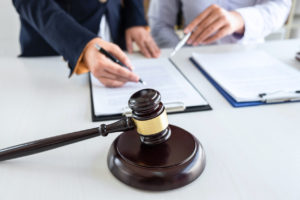TWO OFFICES IN NEW YORK CITY • Hablamos Español

Negotiation
Click For Your Free ConsulationNYC Personal Injury Lawyer » New York Personal Injury Resources » Negotiation
 As a practical matter, negotiation might be the most important skill in personal injury law. That’s because most personal injury claims don’t go to trial.
As a practical matter, negotiation might be the most important skill in personal injury law. That’s because most personal injury claims don’t go to trial.
Instead, the parties resolve their disputes through negotiation.
Table of Contents
In a personal injury claim, money (and sometimes reputation) is at stake. New York state law recognizes three types of monetary damages: economic, non-economic, and punitive.

How much are they worth? In any given case, they are worth a range of values, and where your settlement falls within that range depends largely on your or your lawyer’s negotiating skills.
“Damages” means financial compensation, and damages usually qualify as “economic” if they are easy to count. The most common components of economic damages are medical expenses and lost earnings.
Other expenses that arise from a personal injury can also qualify. You might need to pay for child care, for example, while recovering from your injuries. Keeping thorough documentation can make it difficult for the other side to deny their liability for them.
It’s not enough to compensate you for your economic losses. What about your suffering? Isn’t that worth something? Actually, it is. Lawyers refer to these losses as non-economic damages. In fact, in many cases, compensation for non-economic damages far exceeds compensation for economic damages. The most common forms of non-economic damages include:
Hire a lawyer to negotiate for you if you claim a large amount of non-economic damages. Assigning a specific dollar value to pain and suffering is difficult. You can be sure that the opposing party will exploit this difficulty to minimize your claim’s value.
New York courts will not award punitive damages unless the defendant’s behavior is outrageous and shocking. It is virtually impossible to negotiate a settlement that includes punitive damages, even if the defendant admits their liability. If you want punitive damages, you are going to have to go to court to get them.
Following is a step-by-step overview of the negotiating process. Not all negotiations proceed in exact accordance with these steps. The following sequence of events, however, is typical.
The first step in any preliminary claim investigation is a free consultation with a personal injury lawyer. There, your lawyer will learn about the facts of your claim. You, in turn, will learn about the legal implications of these facts. After that, your lawyer might follow up by obtaining a copy of any accident report, interviewing witnesses, and performing other tasks.
A demand letter states the basic facts of your claim, justifies your claim, and demands fair compensation, It may or may not include a specific amount. A demand letter from a lawyer to an insurance company typically kicks off the negotiating process.
An insurance company will reply to a demand letter by sending a “reservation of rights letter” to the claimant or their lawyer. In this letter, the insurance company reserves the right to deny the claim if it has no merit. This letter is routine, and it is little more than a formality.
Once negotiations begin, a process of offer and counteroffer usually follows. This isn’t always the case, however; in some cases, the defendant remains stubborn. If this happens, you might need to file a lawsuit to get the defendant’s attention.
Filing a complaint and engaging in pretrial discovery is not negotiation. Nevertheless, they pave the way for negotiations by adjusting the parties’ respective bargaining positions in response to new evidence. In discovery, the parties seek new evidence by interviewing witnesses under oath, submitting written questions to the other side, demanding access to physical evidence, and other processes.
After the conclusion of the discovery process, both parties typically possess new evidence they obtained from the other party. If new evidence tilts the playing field far enough against the defendant, the defendant’s willingness to offer an acceptable settlement is likely to be, shall we say, “enhanced.”
To finalize your settlement, you (or, preferably, your lawyer) need to draft a formal written settlement agreement. Draft this agreement carefully because it becomes a binding legal contract once both parties sign it.
After you sign the settlement agreement, it might still take a while to receive your settlement check. The settlement funds will first go to your lawyer, who will deduct any appropriate amounts. These amounts will include legal fees, case expenses, and enough money to pay off any medical lien.
If you negotiate against an insurance adjuster, you will be up against a professional. It’s better to seek another professional, contact a New York personal injury lawyer to negotiate on your behalf. This way, you can even the odds or perhaps even stack them in your favor. Call the Law Offices of Jay S. Knispel Personal Injury Lawyers at (212) 564 2800 to schedule a consultation.
Search Our Site
Our Locations
New York City Office
450 7th Ave Suite 1605
New York, NY 10123
(212) 564 2800
Brooklyn Office
26 Court St., Suite 2511
Brooklyn, NY 11242
(718) 802-1600
We are available to take your call 24/7
